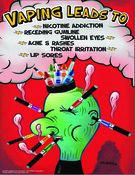It’s been a balmy 80° on the beaches of sunny Santa Monica in the past few weeks, but nevertheless…Winter greetings from the Educator staff! We hope each one of you had a restful (or adventurous, or both – whatever rocks your holiday) break.
We’d like to extend a special “Hello” to some of our newest community partners delivering Project ALERT in Woodbury, TN, Kailua, HI, Lakewood, CO, and Los Mochis, Mexico. Welcome! E Komo Mai! ¡Bienvenidos!
Fidelity, Anyone?
We’ve received several inquiries in the last few months about implementation fidelity. It’s is a continual challenge, but it is critical for program success. We have an informative primer below on how to achieve maximum fidelity as you deliver Project ALERT; and maximum fidelity means maximum results!
Updated Program Manual Available
What’s happening in vaping, inhalants, and marijuana? New prevalence of use data from Monitoring the Future have been released. Check out which substances were on the rise in 2017 and which lost some ground. And meet "Green Vaping Guy," in our newest poster that highlights the hazards of e-cigarette use.
State of the Program Survey
Our 2017 survey results are in! Once again, we’re tremendously grateful for our program partners that took the time to let us know how (and if!) they are using Project ALERT, what has been most beneficial about the program, and what suggestions they have for enhancing the curriculum. See the recap of results from Eric Pedersen.
As we head back to our winter wonderland (aka, the beach), we want to remind you to please contact us with any issues or questions, fidelity or otherwise, at projectalert@rand.org, or 1-800-ALERT-10. We’re here to help, and aim to respond to all inquiries within 24 hours.


